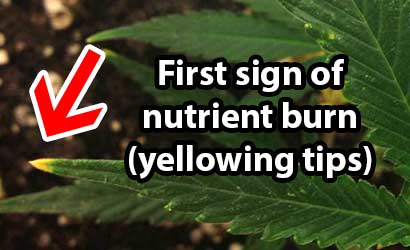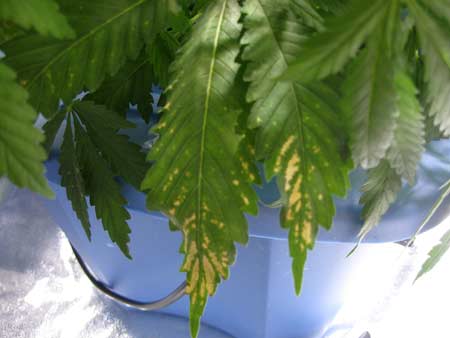***(going to tuck this into here for now)***
Some years ago, Mr. Hugh Lovel (supported by the work of many other intelligent people) began to realize there was an obvious hierarchy of how elements worked in living organisms. One thing had to occur before the next thing could happen, and so on down the line in a sequence.
Eventually he developed his theory of this hierarchy of elements, which he called this “The Biochemical Sequence (of Plant Nutrition)”.
The biochemical sequence can be hard to understand so for the sake of this article we’ll use a (over)simplified and summarized version. If you feel you understand this version, you may want to dive a little deeper and look up Hugh Lovel’s own article on the subject.
Hold on to your hats, here it goes! The plant biochemical sequence begins with:
1 –
Boron:
Boron is the gas pedal of the sequence. It creates sap pressure which allows vascular fluids to move up and down your plant. It also activates Silicon – an often overlooked element in plant nutrition, but most definitely an essential one.
2 –
Silica/Silicon: Boron provided the gas to move, but without a good highway system you would still get nowhere.
Silicon provides the highway that facilitates efficient transport of all other nutrients.
3 –
Calcium: Now we have gas and a highway system, we need something to travel our highway with. That’s where
Calcium comes in. Calcium is the truck that travels on the silicon highway, collecting and carrying the nutrients that follow in the sequence.
4 –
Nitrogen: Our Calcium truck holds precious cargo, our
Nitrogen. Nitrogen is the basis of amino acid formation, protein chemistry and DNA replication. Once Nitrogen enters the equation, all sorts of proteins, enzymes, and hormones are produced, and other complex processes are set in motion.
5 –
Magnesium: When the calcium truck arrives at its destination, the next thing on the agenda becomes the harvesting of energy. Plants do this with their chlorophyll, which ‘catch’ the energy from the sun in the process we know as “photosynthesis” (you know, our source of oxygen).
Magnesium is essential in photosynthesis, and can be looked at as the power plant, allowing chlorophyll to function.
6 –
Phosphorus: After the chlorophyll caught the energy, this energy needs to be put to good use. As you may remember from high school biology: In photosynthesis, light, carbon dioxide and water are used to produce carbohydrates (sugars).
Phosphorus plays an essential role here, as it allows an energy transfer from the chlorophyll. In this regard, we can look at Phosphorus as the gas station providing chlorophyll a place to store energy during photosynthesis.
7 –
Carbon:
Carbon, as Carbon dioxide (CO2), combines with water, making carbohydrates (sugar) and releasing oxygen.
8 –
Potassium: And finally the produced sugars need to find their way to wherever they are needed most.
Potassium is the tour guide in charge of just that!
>>>> *** more***
The Biochemical Sequence starts off with
Boron which is the catalyst that enables calcium to move around a plant and it greatly influences the healthy uptake of calcium by the plant. Boron is essential to activate
silica which plays a major role in building plant cell structure and cell strength, as well as playing several vital roles in plant metabolism. Silica is vital for carrying nutrients around the plant, especially calcium.
Calcium is essential in the physiology of plant cells; it functions as a signal for many cellular processes and is involved in the activation of certain plant enzymes. Calcium is involved in both cellular structure and cell division, and it is essential to photosynthesis. One of its key roles in plant growth is to bind nitrogen. But before we get to nitrogen, we take sulphur into account.
Sulphur is another essential plant nutrient as it improves the efficiency of other plant nutrients, particularly nitrogen and phosphorus. Sulphur works directly with nitrogen, enabling the conversion of nitrogen in the leaf to amino acids, and supporting basic carbohydrate metabolism in the plant.
Nitrogen forms the amino acids that create proteins in plants and animals, and there would be no life on Earth without it. Next in the sequence is
magnesium which is present in chlorophyll and synthesizes with amino acids, vitamins and minerals. Photosynthesis is not possible without magnesium.
Phosphorus is then needed to transfer the energy that results from producing sugars out of carbon dioxide and water. In the presence of phosphorus the
carbon is prised lose from the carbon dioxide so that it can combine with water to make sugar and release oxygen. The sugars are then taken up in the sap and cells of the plant under the direction of
potassium.
>>>> LIEBIG’S LAW OF THE MINIMUM
Plants will naturally follow this sequence, so it’s in our best interest to familiarize ourselves with it. It’s important to understand that a plant can only perform as well as their most deficient nutrient allows them to. Without the earlier functions, the later functions won’t work optimally. This is easily illustrated in Liebig’s “Law of the Minimum”.
Liebig’s law states that the growth of a plant is not dictated by the total resources available, but rather by the scarcest resource. This is often illustrated with a barrel with unequal staves. The water holding capacity of the barrel will always be limited by the shortest stave, just like the growth of your plant will always be limited by the nutrient (or other factor) in the shortest supply.
~~~~~~~~~~~~~~~~~~~~~~~~~~~~~~~~~~~~~~~~~~~~~~~~~~~~~~~~~~~~~~~~~~~~~~~~~~~~~~~~~~~~~~~~~~~~~~~~~~~

..is that what this ringing noise in my head is,..??

....Thanks my dear brudda Astro!...

-- Honestly, it wasn't that heroic a chore, mostly just trans-site scope and pillage button mashing! The idea for now is to compile a fairly comprehensive picture depot to combine with other on and off site text info to help folks learn to do some basic diagnostics,... next step will be to consolidate some of them together into one thread,... the challenge will be finding a balance between overwhelming amounts of info and details, and ease-of-use simplicity with solid, helpful info,...


.... that part is still up in the air,.. so meantime, this is best used as an independent tab opened along with others like JM's Self Diagnose Your Plants thread, or whatever folks are familiar with.....
https://www.autoflower.org/index.php?threads/self-diagnose-your-plants-basic-deficiencies-list.11/
... between the two of them, the bases are pretty well covered, and some confirmation help is available here as well of course, at the Infirmary or Live Help! Diagnostics can be tricky, and stakes are high, we know!














 courtesy of Man O' Green
courtesy of Man O' Green  ... here's a toxicity example, caused by nute solution corrosion of a copper valve in hydro-->
... here's a toxicity example, caused by nute solution corrosion of a copper valve in hydro--> 









































 ..Over 6.8 and you're gambling with pH lockout of some micronutes,... optimal pH is about 6.4 give or take a couple....
..Over 6.8 and you're gambling with pH lockout of some micronutes,... optimal pH is about 6.4 give or take a couple....



 ....Thanks my dear brudda Astro!...
....Thanks my dear brudda Astro!... -- Honestly, it wasn't that heroic a chore, mostly just trans-site scope and pillage button mashing! The idea for now is to compile a fairly comprehensive picture depot to combine with other on and off site text info to help folks learn to do some basic diagnostics,... next step will be to consolidate some of them together into one thread,... the challenge will be finding a balance between overwhelming amounts of info and details, and ease-of-use simplicity with solid, helpful info,...
-- Honestly, it wasn't that heroic a chore, mostly just trans-site scope and pillage button mashing! The idea for now is to compile a fairly comprehensive picture depot to combine with other on and off site text info to help folks learn to do some basic diagnostics,... next step will be to consolidate some of them together into one thread,... the challenge will be finding a balance between overwhelming amounts of info and details, and ease-of-use simplicity with solid, helpful info,...  .... that part is still up in the air,.. so meantime, this is best used as an independent tab opened along with others like JM's Self Diagnose Your Plants thread, or whatever folks are familiar with.....
.... that part is still up in the air,.. so meantime, this is best used as an independent tab opened along with others like JM's Self Diagnose Your Plants thread, or whatever folks are familiar with..... 